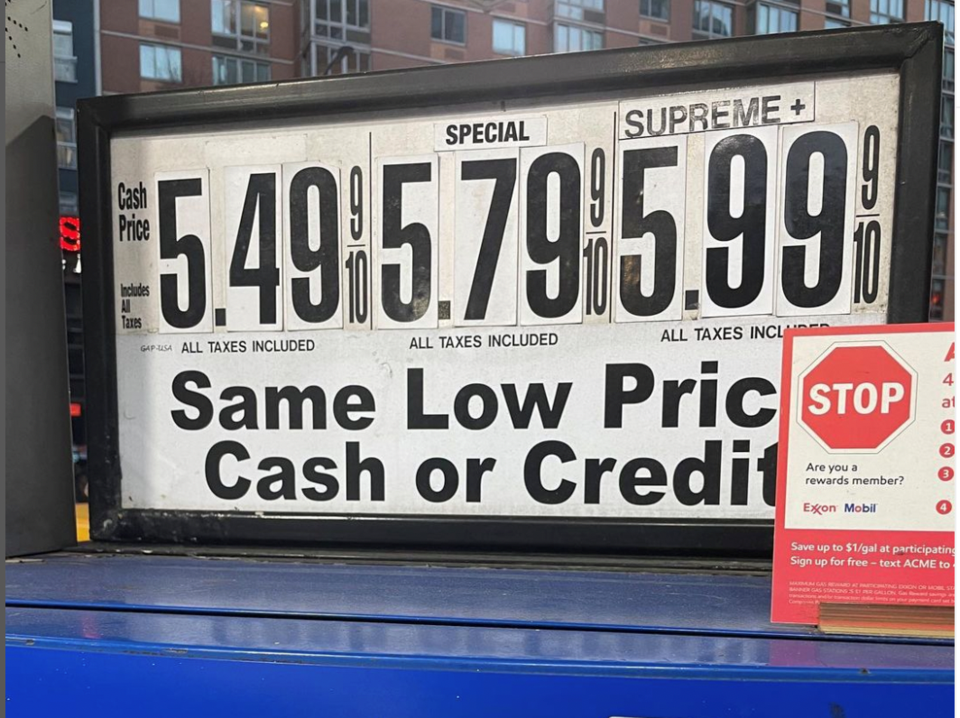Gas prices are at record highs-- above $5 per gallon in nearly half of the United States!
The average price of a gallon of gas is $4.97 across the country, and the prices do not look like they will be lowering any time soon!
In an effort to save money, drivers may be trying to carpool, switch to mass transit or purchase a new automobile with better gas mileage. Although these are some smart ways to minimize spending, not everyone has carpooling options, are able to utilize mass transit, or can afford to purchase a new car.
The New York State Division of Consumer Protection (DCP) has shared these useful tips for saving money every time you fill up!
- WAIT until your gas gauge reads ¼ tank before filling up in warmer weather. Your vehicle gets better gas mileage with a lighter load and keeping the tank full can waste money.
- CHOOSE the lowest octane recommended for your car.
- COMPARE the price advertised on the gas station’s sign and on the pump to make sure they are the same. If not, ask which price is the one you would actually be paying.
- DOUBLE CHECK that the price per gallon remains the same throughout the entire time you are pumping. Be aware if the price per gallon changes or the number turns back or advances quickly.
- MAKE sure
thatthe gas pump reads $0 before you begin fueling and stops running when you finish pumping, so you know you are only paying for the gas being dispensed into your vehicle. - KNOW the size of your gas tank and how many gallons of gasoline it holds so you can make sure you are getting what you are paying for at the pump.
- ASK your gas station if they have different prices for payment in cash or credit. Some stations offer gas at several cents less per gallon if you pay in cash.
- USE a gas price tracking app to compare prices at local gas stations and try to use a station that is on your route so you aren’t driving extra miles. Driving out of your way to save money at the pump may not save you anything.
- AVOID filling up right before a holiday or weekend when gas prices tend to be higher.
- WATCH OUT for scams. Scam artists prey on desperate consumers during difficult economic times or when certain commodities become difficult to obtain or ultra-expensive. Approach alleged fuel saving programs, devices, or chemicals with skepticism. Remember that if it sounds too good to be true, it probably is.
- CUT BACK on needless driving around. Make lists of errands and try to have them all in similar locations.
- MAINTAIN your vehicle in good condition. Your vehicle will get better gas mileage if you have the oil changed and tire pressure checked regularly. Get a tune-up from a certified mechanic.
- CLEAN out your vehicle and carry only what is necessary. Extra weight in your car lowers your gas mileage. Consider removing roof racks and towing devices mounted on the outside of the vehicle when not in use.
- CHANGE your driving habits. Your vehicle will get better gas mileage if you do not accelerate fast or overuse your brakes, commonly referred to as “riding your brakes.” To save gas, stay at or under the speed limit, and drive at a consistent rate of speed. Consider using cruise control when practicable, and do not idle your car in a parking lot or driveway.
- CONSULT maps, internet directions or a GPS system to ensure you are taking the most efficient route and reduce the likelihood of getting lost and driving unnecessary miles.




